Opening of Woodlands Health eases load of other hospitals, including their emergency departments
Sign up now: Get ST's newsletters delivered to your inbox
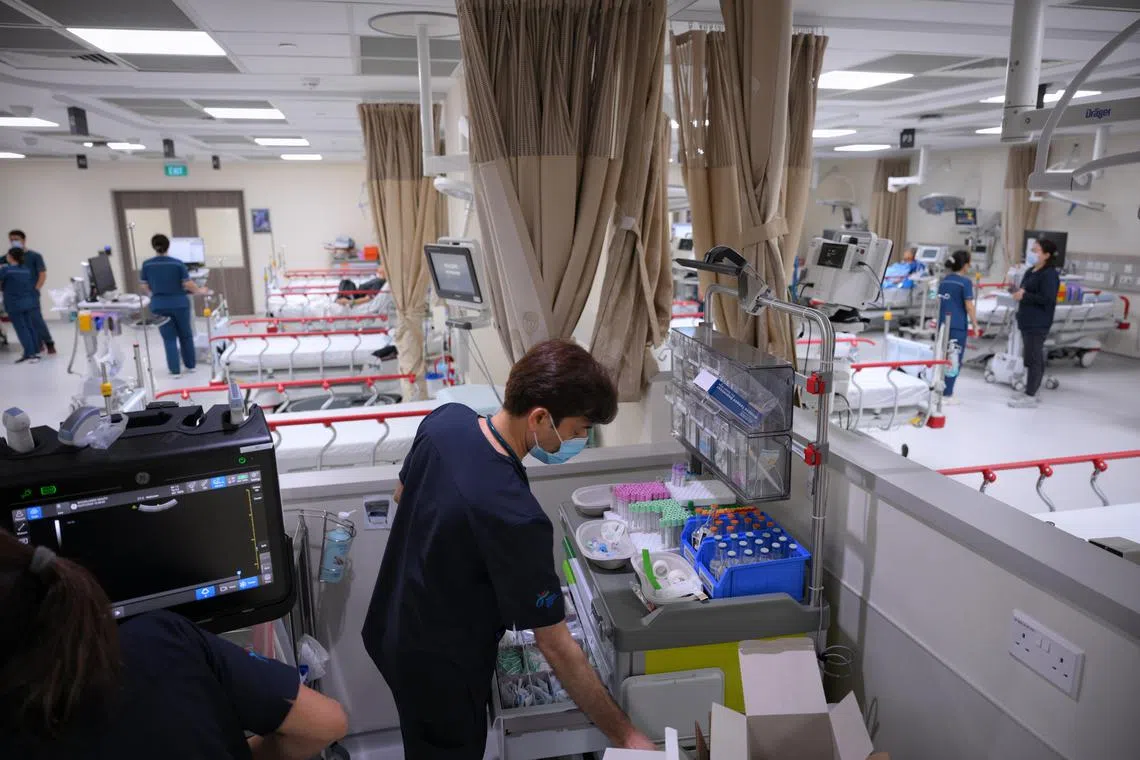
The emergency department area at Woodlands Health.
ST PHOTO: MARK CHEONG
Follow topic:
The opening of the Woodlands Health (WH) campus
Meanwhile, her back pain got worse. In April, WH, which comprises a hospital, community hospital and medical centre, got in touch to ask if she would like to see one of its doctors instead. She could do so in early June, shaving more than a month off her TTSH wait.
“It felt like a blessing, not just because it was nearer to where I live, but more importantly, because the pain was getting worse and I couldn’t even stand,” she said. She has since seen a doctor and gone for two physiotherapy sessions, and can now walk with less pain.
Madam Indrani is among more than 1,300 patients who had appointments to see specialists at Khoo Teck Puat Hospital (KTPH) or TTSH but have moved to WH.
Mr Joe Sim, group chief executive officer of National Healthcare Group (NHG), which runs all three hospitals, said: “We noted in May that some patients who initially had to wait for a specialist outpatient clinic (SOC) appointment in two months were able to get their SOC appointment in WH within two weeks.”
Woodlands Health, which was officially opened by Senior Minister Lee Hsien Loong on July 13, has helped to ease the load of not only outpatient clinics – but also KTPH’s emergency department (ED). Between May 2 and June 15, about 350 patients were transferred from the latter to WH.
These were mostly patients who needed urgent care, but whose conditions were not life-threatening. They were conveyed between hospitals with WH’s hospital transport. A WH spokesman said about seven were transferred daily, but the number could go up to as high as 18 a day. This has eased the bed occupancy rate at KTPH to around mid-90 per cent daily, down from 100 per cent.
Earlier in 2024, some patients who needed to be hospitalised at KTPH had to wait two days or more before they were moved to a ward.
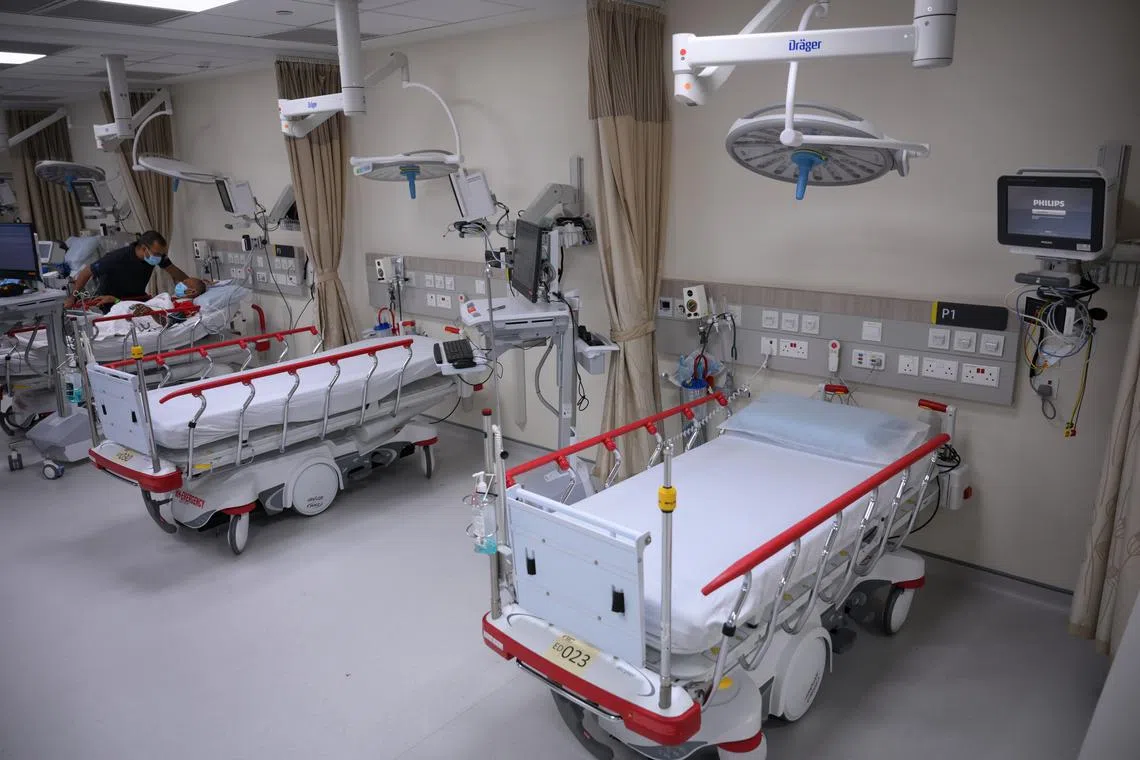
Woodlands Health has helped to ease the load of not only outpatient clinics – but also KTPH’s emergency department.
ST PHOTO: MARK CHEONG
Added Mr Sim: “WH clinicians were stationed at the ED of KTPH to triage and transfer suitable patients to WH since its opening in May 2024. This has enabled more timely and accessible care for our patients, improving the overall management of specialist appointments and bed capacity.”
He described the cooperation as a “one NHG effort” as they all belong to the same healthcare group.
One of three public healthcare clusters in the country, NHG takes care of the medical needs of people living in central and northern Singapore. The other two clusters are SingHealth in the east and the National University Health System in the west.
With the opening of the new hospital, Singapore now has nine public general hospitals. Two more, in Bedok and Tengah, are in the pipeline.
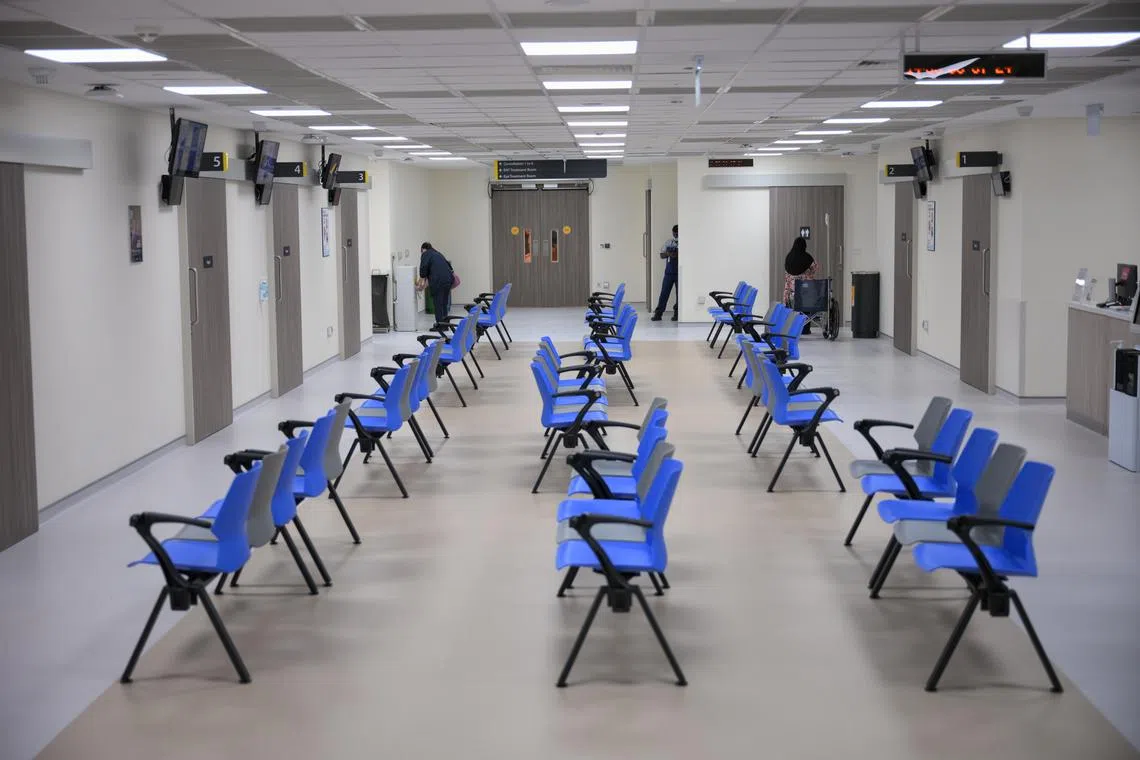
The emergency department triage area at Woodlands Health campus.
ST PHOTO: MARK CHEONG
Located at 17 Woodlands Drive 17, WH, which has about 2,400 clinical staff, has 460 beds in use now. It will have a total of 1,400 acute, community and long-term care beds when it is fully opened. There are also provisions to add 400 beds in the future if the need arises.
With acute and community hospitals sharing the same building, patients can be moved seamlessly from acute to step-down care, such as medical, nursing and rehabilitation, with the same doctors in charge.
Aside from the integrated acute and community hospital, the 7.7ha facility has a medical centre with specialist clinics and a long-term care facility.
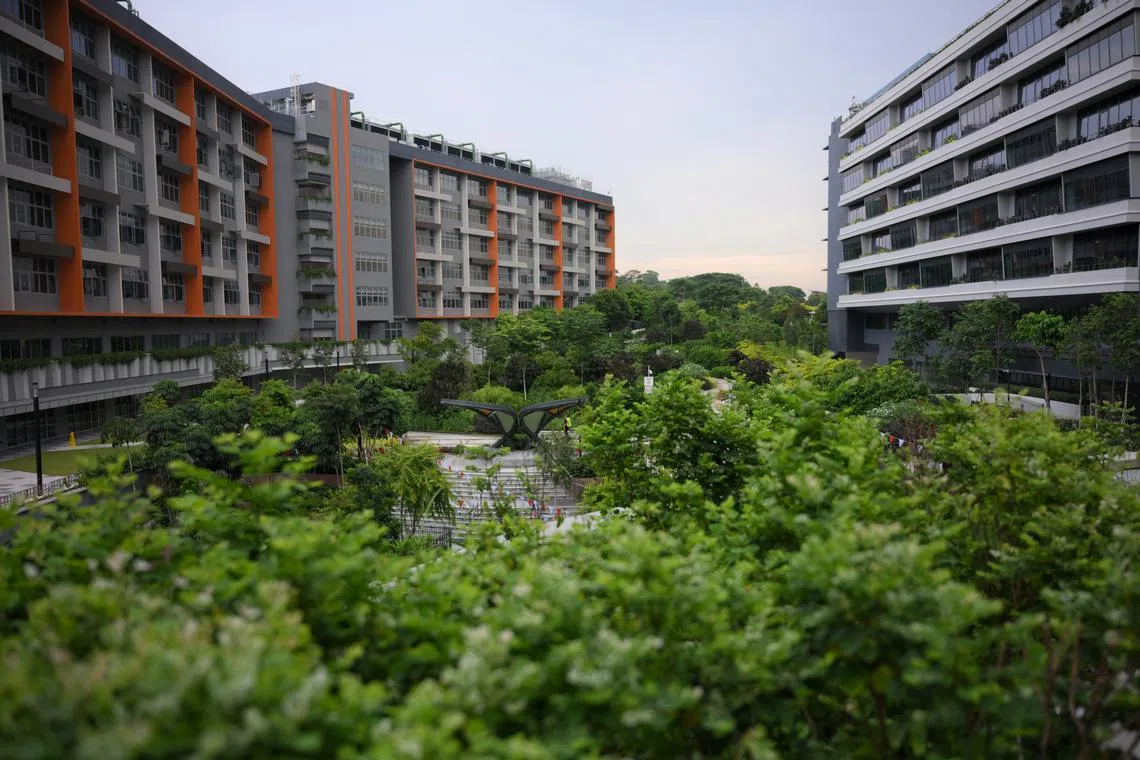
Woodlands Health campus’ Long Term Care Tower (left) and Medical Centre (right).
ST PHOTO: MARK CHEONG
WH is built with possible future pandemics in mind. It has one negative pressure ward and 60 rooms that are negative pressure-ready. Negative pressure prevents any contaminated air in the ward or room from flowing into the corridor.
Its ED has eight resuscitation rooms, of which two have been designated for patients with infectious diseases. There is also a large sheltered area adjacent to the ED ambulance bay that can be converted to hold patients temporarily.
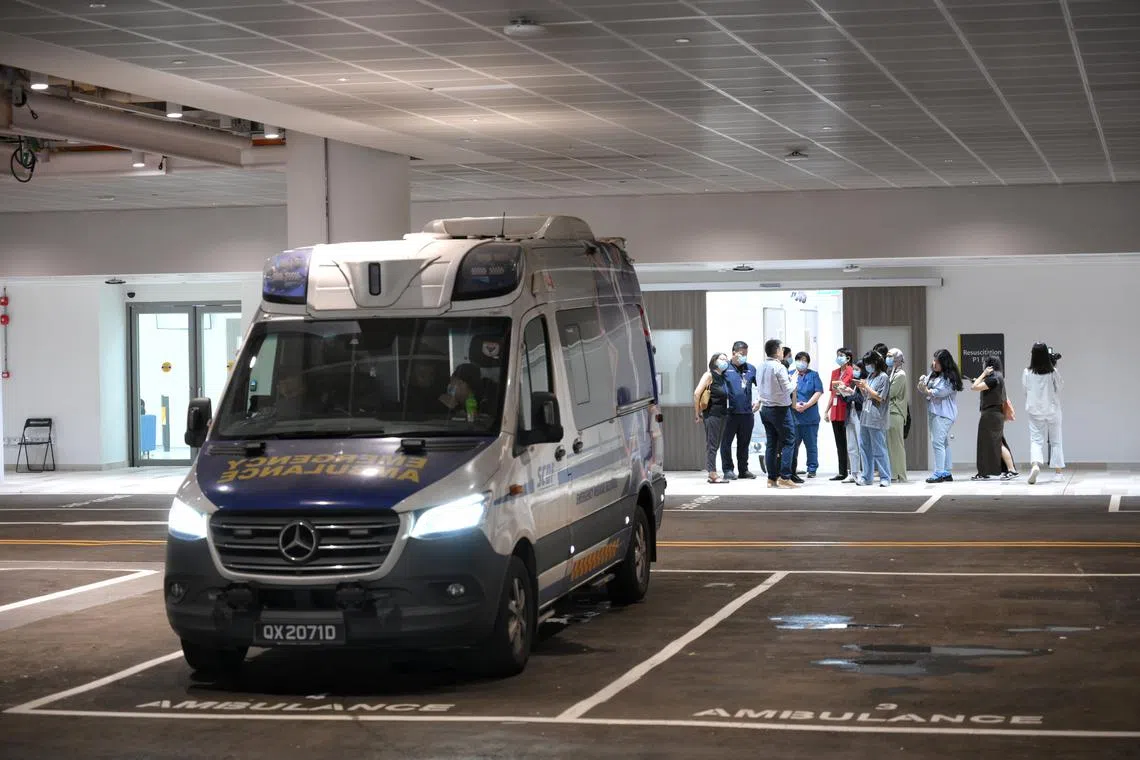
The ambulance bay at Woodlands Health.
ST PHOTO: MARK CHEONG
The hospital wards have built-in additional points to provide oxygen and suction capabilities so extra beds can be included if needed. The same applies to all the cubicles in the ED so they can accommodate two beds.
The hospital has even put power points in its trauma lifts, in case of emergencies and if electricity is needed to power equipment to sustain a patient.
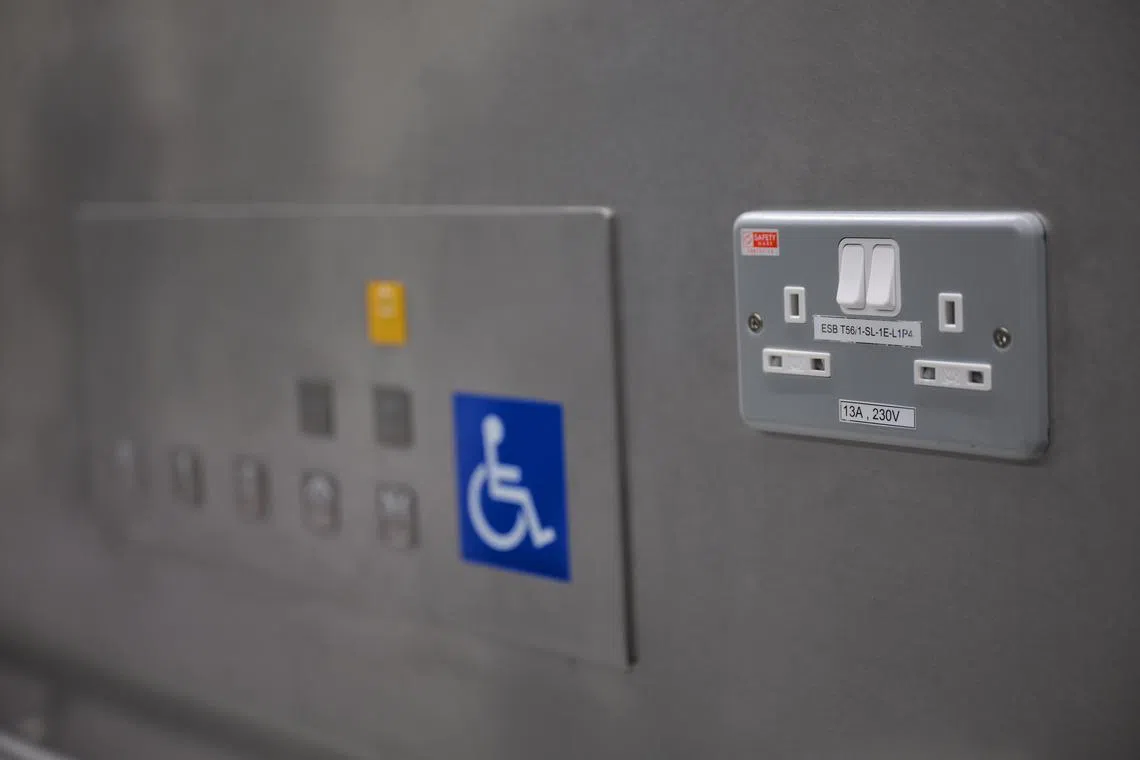
The trauma lifts are also equipped with power points in case of emergency.
ST PHOTO: MARK CHEONG
But it is not all about resources and infrastructure. In planning the hospital, the patient’s mental well-being is also a priority.
Originally, the hospital was positioned next to a park. WH did a land swop with NParks so the building extends into the original parkland, with 1.5ha of the parkland now sited between two of WH’s buildings to form a Healing Garden.
The Healing Garden is looked after by NParks, and is the largest purpose-built therapeutic garden, said SM Lee, who added that it “creates a calming and inviting environment, where patients can undergo ‘green therapy’”.
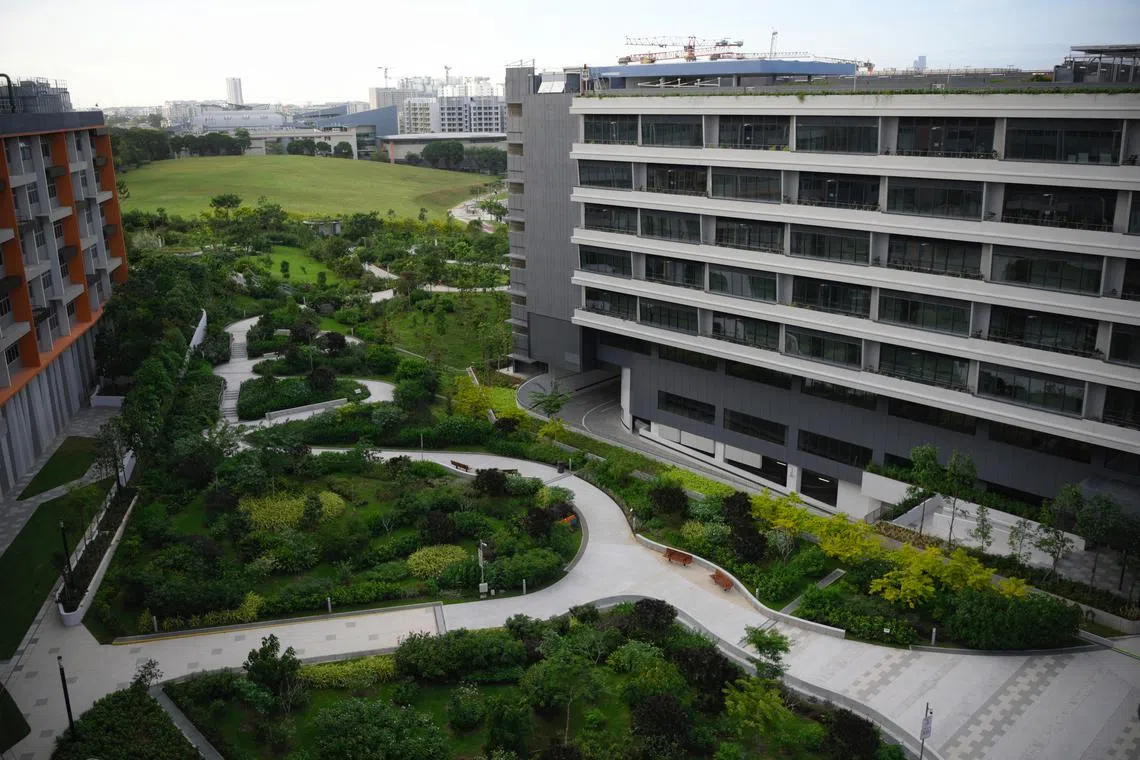
With the opening of the new hospital, Singapore now has nine public general hospitals. Two more, in Bedok and Tengah, are in the pipeline.
PHOTO: ST FILE
One of the buildings facing the garden is a 322-bed nursing home run by Ren Ci. The charitable Buddhist organisation, with 30 years of experience in the healthcare sector, also runs a community hospital, a chronic sick unit, nursing homes, as well as senior care centres and an active ageing centre.
Dr Jamie Mervyn Lim, CEO of Ren Ci Hospital, said the proximity to WH allows for a shared care model. “We can reduce polypharmacy, streamline specialist outpatient clinic appointments, as well as facilitate advance care planning and symptom control for patients with complex care needs,” he said.


